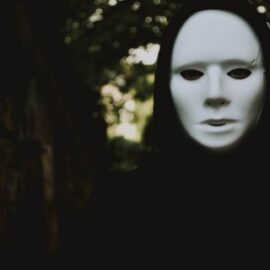

This article is an excerpt from the Shortform book guide to "Many Lives, Many Masters" by Brian L. Weiss. Shortform has the world's best summaries and analyses of books you should be reading.
Like this article? Sign up for a free trial here .
Why is the book Many Lives Many Masters controversial? Are its claims true?
In 1981, the course of Dr. Brian Weiss’s career changed dramatically when one of his therapy patients, “Catherine,” suddenly recalled details of her past lives while under hypnosis. Weiss wrote about his experience with Catherine in his book Many Lives Many Masters. In the decades since the book’s publication, many have grappled with its claims.
Continue reading for our Many Lives Many Masters review.
Examining the Claims of Many Lives Many Masters
Though Weiss, like many scientists, is a natural skeptic, his experience with this patient convinced him that reincarnation is real, human souls are eternal, and there are spiritual “Masters” providing help and guidance from beyond the veil. Our Many Lives Many Masters review examines the book’s claims.
Could Catherine’s Story Be a Case of Cryptomnesia?
The real “Catherine” has never come forward, so the few details Weiss provides are our only source of context for her life. This lack of context is important because many other cases of past life regressions have turned out to be the result of cryptomnesia, or false memories spun from forgotten details of a person’s life experiences.
For example, while under hypnosis in 1952, a Colorado housewife named Virginia Tighe recalled a past life as an Irishwoman named Bridey Murphy. The story collapsed, however, when researchers discovered that Tighe had lived across the street from an Irish immigrant named Bridie Murphy Corkell as a young child. They concluded that she must have stored this name as a buried memory, which was later unearthed and spun into an entire “past life” story under the suggestive power of hypnosis. Similarly, without knowing more about Catherine’s life, it’s impossible to rule out such an explanation for her past life memories.
The Use of Hypnosis
Using hypnosis to recover repressed memories, including repressed trauma, was a popular therapeutic technique in the early 1980s, when Weiss treated Catherine. However, psychologists are now split on whether this is a valid therapeutic practice. Some psychologists condemn the practice because research shows it’s possible for therapists to implant false memories in the minds of hypnotized patients. These false memories often feel so vivid that the patient fully believes they’re real, which is especially dangerous when the false memory relates to abuse.
Weiss assumes that processing a past-life memory of drowning is what cured Catherine’s nightmares. However, it’s also possible that merely being under hypnosis alleviated her nightmares, regardless of her specific memories; studies show that practicing relaxation techniques—such as hypnosis—can alleviate adult nightmares.
Fact-Checking Catherine and Weiss’s Claims
How likely is it that Catherine was describing an actual past-life experience? Let’s evaluate the evidence.
First, Catherine specifically named the year of the first past-life memory she recovered as “1863 BC.” Some reviewers took this specificity as a sign that Catherine (or Weiss) lied about her experience. If Catherine were truly speaking from the viewpoint of someone in that time, she would have no reason to add “BC,” as scholars wouldn’t begin dividing history into “BC” and “AD” until more than 2,000 years after that supposed memory.
However, this argument assumes that, while under hypnosis, Catherine was not at all aware of her present reality (and her knowledge of the BC/AD divide). When Catherine recalled other past lives, she withheld certain embarrassing information in the moment and only disclosed it to Weiss later on. This indicates that Catherine’s conscious mind was still somewhat active and able to intervene during hypnosis, which means she theoretically could have interpreted the memory through the lens of her modern conception of time.
Second, Weiss claims he ruled out any other possible explanation for Catherine’s past-life visions, yet he failed to consider that anxiety and depression (both of which Catherine struggled with) can sometimes cause hallucinations, even in the absence of other psychiatric disorders.
However, to Weiss’s credit, these causes are unlikely to fully explain Catherine’s experiences, since the hallucinations caused by depression tend to be brief, and Catherine’s visions often lasted over an hour. Furthermore, hallucinations caused by anxiety are more likely to be auditory than visual, and Catherine’s past-life memories focused on visual information. Therefore, while Weiss didn’t consider Catherine’s anxiety and depression as possible explanations for her experience, they’re still unlikely to be the root causes.
The Aftermath
Weiss’s experience with Catherine opened his eyes to a new approach to therapy. While he doesn’t necessarily think that past life regression therapy is the right treatment for everyone, he wants psychiatrists to be open-minded and keep it as an option for those with disabling psychiatric symptoms.
In the decades since Many Lives, Many Masters was published, the psychiatric establishment has not heeded Weiss’s call. While scientific research on past life regression and other metaphysical topics remained popular into the early 1990s, its popularity has waned and is now mostly relegated to niche journals. However, while the American Psychological Association hasn’t endorsed past life regression therapy, they also haven’t condemned it, leaving the door open for potential future research.

———End of Preview———
Like what you just read? Read the rest of the world's best book summary and analysis of Brian L. Weiss's "Many Lives, Many Masters" at Shortform .
Here's what you'll find in our full Many Lives, Many Masters summary :
- How a skeptical scientist was convinced that reincarnation is real
- The case study of "Catherine," a patient who recalled her past lives
- The important life messages passed down by Catherine's masters






